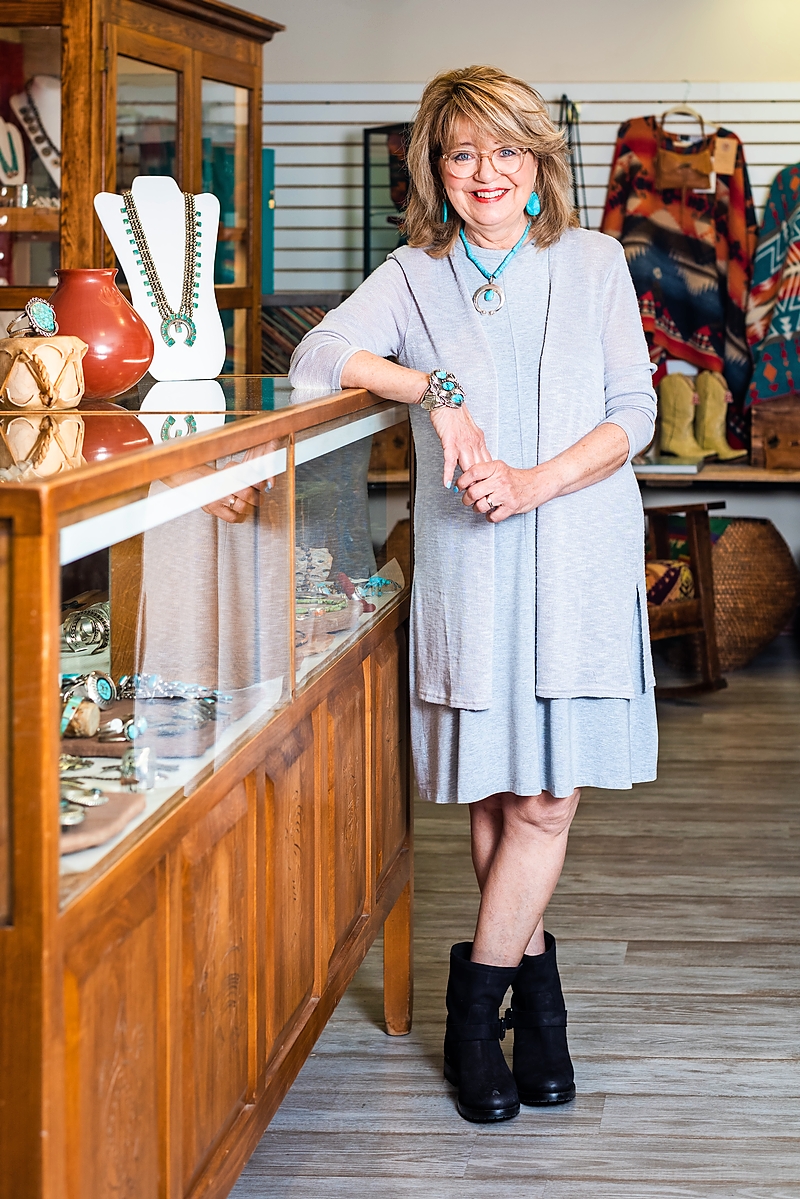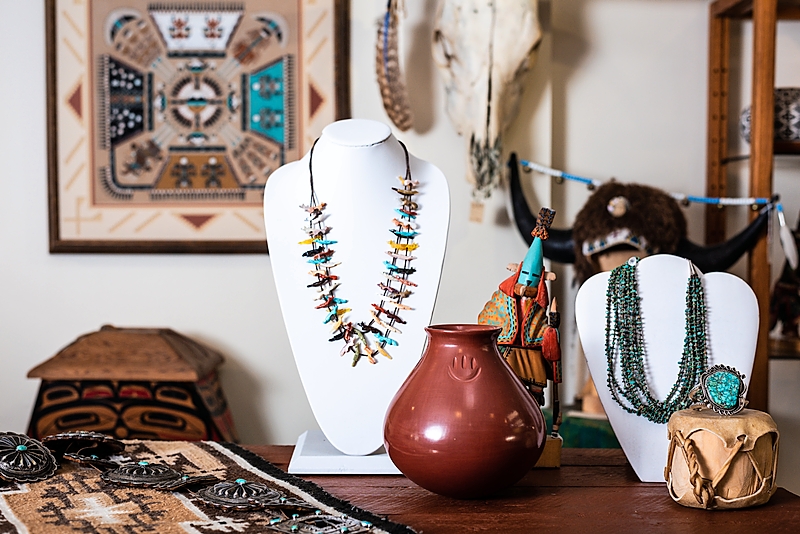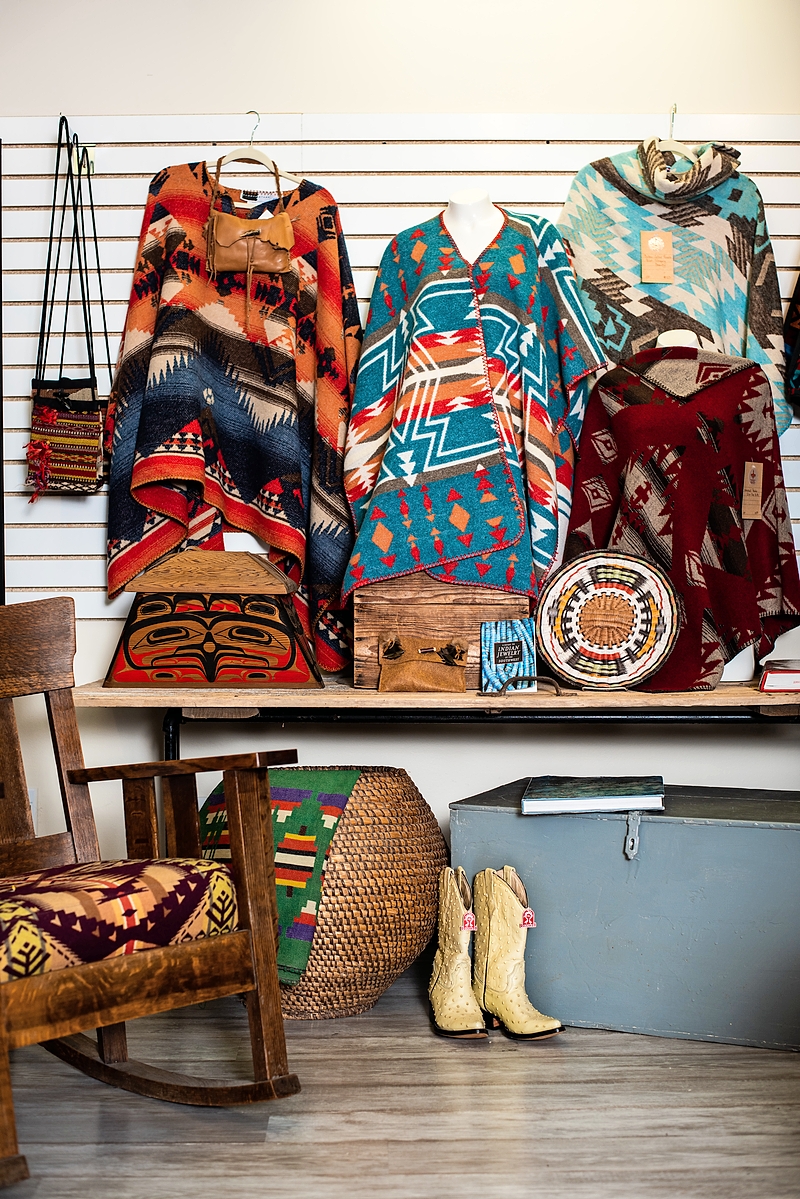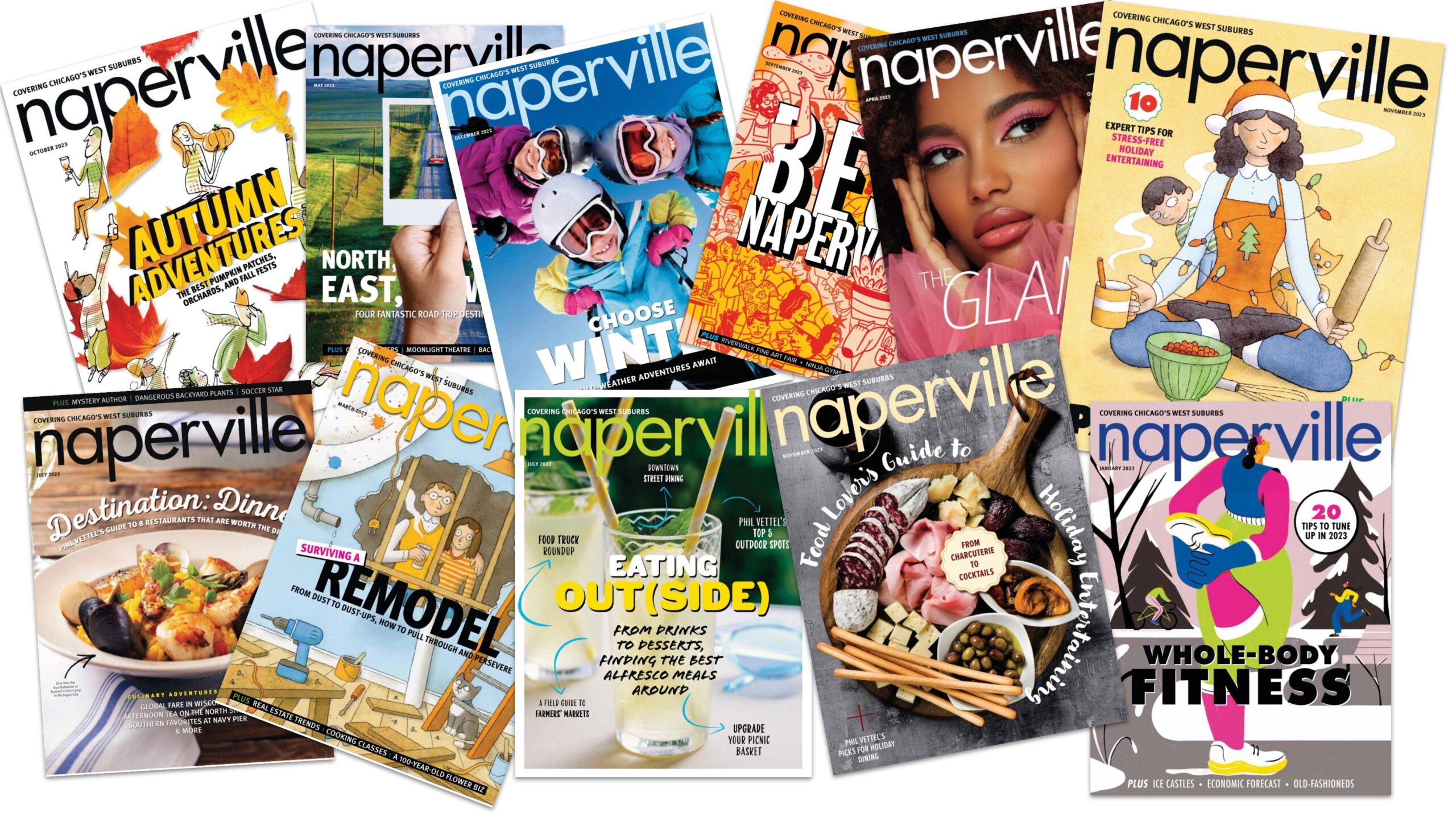Native Wares
By Naperville Magazine
September 2018 View more Shop

By Annemarie Mannion
Naperville resident Janet Smith-Peterson came by her love of Native American arts and jewelry naturally—she was enthralled by the turquoise jewelry her mother wore.
In the mid-1980s, she opened her first gallery in St. Charles and later operated businesses in Naperville and Downers Grove. Now she is again sharing her love for Native American arts at the Sundance Gallery in Geneva.
The colorful, sunlit space featuring silver and stone jewelry, baskets, artwork, and fashion is where Smith-Peterson believes she can best pursue her mission of promoting and preserving Native American arts.
Why did you want to open another store after closing three?
I said I’d never have another store, but the Creator had another idea. I am one of the only people in the area who has this expertise. I saw a void here, and I’ve always seen a gallery as a place that allows me have a space that preserves and promotes native arts.
How did you first get seriously interested in the culture?
I visited my brother when he was in college in Arizona, and my life changed course. I had an “aha” moment and realized that rather than pursuing social work, I wanted to work with native people and surround myself with their treasures. For 34 years I have traveled to reservations around the country, studying American Indian art and purchasing authentic Indian goods.

What do you love about Native American arts and jewelry?
There is no separation in this culture between art, the home, family, friends, and spirituality. Historically, these items were not made as art. They were made to be used, worn, and shared. They were also made to be beautiful and to last. When these items are placed in their historical context, they tell a story. When I see a piece, I want to know the story.
What do you look for when buying?
Buying trips have to be flexible and organic. I have to be willing to change direction at a moment’s notice. Remember, I am dealing with artists—not buying from a catalog. That can mean a very long drive down a dirt road to meet someone who has some treasures. It also means that I need to take the time to develop a relationship with the artist. But, that said, I always look for quality. Not every piece will be museum quality, but I offer work that is carefully handcrafted with attention to detail.
What do you remember about your first trip to the West?
My first buying trip in 1985 was definitely eye opening. I was so naive. I soon learned that doing business with native people means doing business with friends, and that an appointment can turn into a meal, a hike, a drive, or an oral history lesson from a family elder that can last all afternoon—and that’s a blessing.

How do you embody native culture in your everyday life?
I seek harmony and balance. We are all connected, all one family. I’ve learned that cooperation, rather than competition, is better for the world. Give of yourself and you will be rewarded generously.
What is your favorite piece?
It’s a piece I inherited. My mom’s turquoise ring is the thing I’d grab if I were running out of a burning building. She loved Native American jewelry and had a heart for their plight. She was a huge influence on my career choice. The ring is a simple piece made in the 1960s, but it’s the most powerful piece of art that I own.
Photography by Jason Adrian


